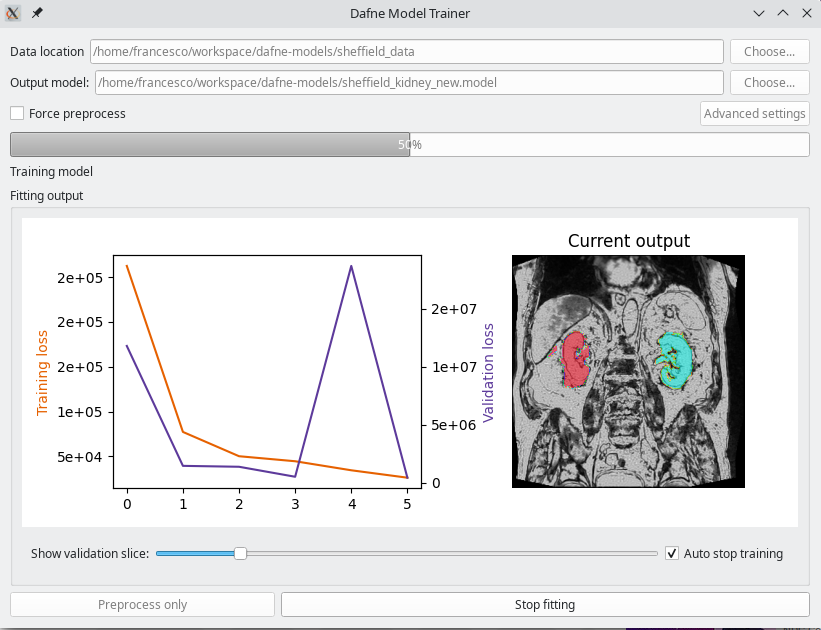This is a major milestone in Dafne! The program itself underwent some improvements, the biggest of which is probably not immediately visible but it dramatically reduces the memory footprint by storing the masks in memory in a compressed format instead of large matrices. This should enable much larger datasets to be loaded and processed.
What we are moving towards, and this is the most exciting part, is a world where Dafne supports a proper model zoo! There is now a model browser to be accessed under “Tools”, and it allows the selection of models from the server that are shown. This is a pair with the model trainer, the exciting new tool that allows creation of new models just from a handful of labeled datasets.
Take some datasets, manually segment them with Dafne, and save the results as “numpy bundles”. Then point the model trainer to the folder containing the bundles, press “Preprocess and fit”, and you have a new model!

The model trainer can be installed through pip:
pip install dafne-models[GUI]
and executed with
create_model_ui.py
The model trainer was presented at the ESMRMB 2023 and is a collaboration with the University of Sheffield (UK).
Get the new release at https://github.com/dafne-imaging/dafne/releases/tag/1.5-alpha or through pip install dafne.
Please bear in mind that this release is still experimental. Contact us to receive your personal API key.
